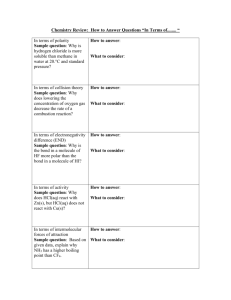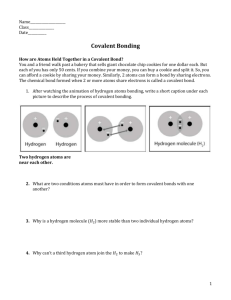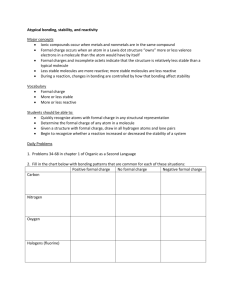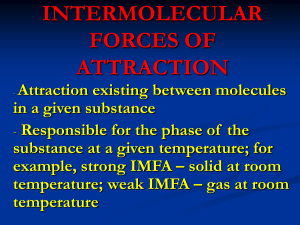form - shellyeco
advertisement
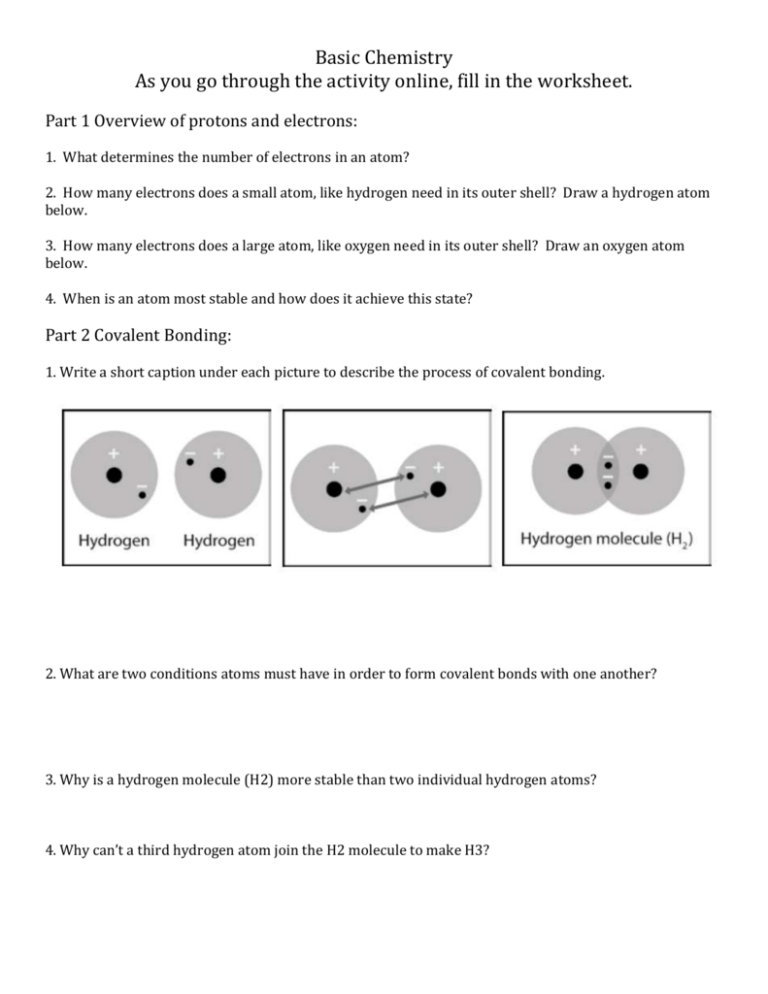
Basic Chemistry As you go through the activity online, fill in the worksheet. Part 1 Overview of protons and electrons: 1. What determines the number of electrons in an atom? 2. How many electrons does a small atom, like hydrogen need in its outer shell? Draw a hydrogen atom below. 3. How many electrons does a large atom, like oxygen need in its outer shell? Draw an oxygen atom below. 4. When is an atom most stable and how does it achieve this state? Part 2 Covalent Bonding: 1. Write a short caption under each picture to describe the process of covalent bonding. 2. What are two conditions atoms must have in order to form covalent bonds with one another? 3. Why is a hydrogen molecule (H2) more stable than two individual hydrogen atoms? 4. Why can’t a third hydrogen atom join the H2 molecule to make H3? 5. Write a short caption beside each picture to describe the process of covalent bonding. 6. Briefly describe the process of covalent bonding between two oxygen atoms to make an oxygen molecule. Be sure to mention attractions between electrons and protons and the number of electrons in the outer energy level for the atoms in the final molecule. 7. Briefly describe the process of covalent bonding between the carbon and the four hydrogen atoms to make a methane molecule. Be sure to mention attractions between electrons and protons and the number of electrons in the outer energy level for the atoms in the final molecule. Part 3 Ionic Bonding: 1. What is the basic difference between covalent and ionic bonding? 2. Write a short caption beside each picture to describe the process of ionic bonding. Part 4 Hydrogen Bonding 1. Draw a hydrogen bond below 2. Using terms we have discussed in class describe what a hydrogen bond is. Part 5 Summary: Your objective is to use the above information to make a claim as to which type of bonds in the weakest bond and which is the strongest and weakest. You need to use the information you have previously gathered to support your opinions. You then need to follow up your explanation with an example of a molecule for each type of bond that uses these bonds. Then explain why it is important for it to bond the way it does in order to complete its function in nature properly using information gathered above and your previous knowledge about its function in life. You should complete this on a separate sheet of paper.


